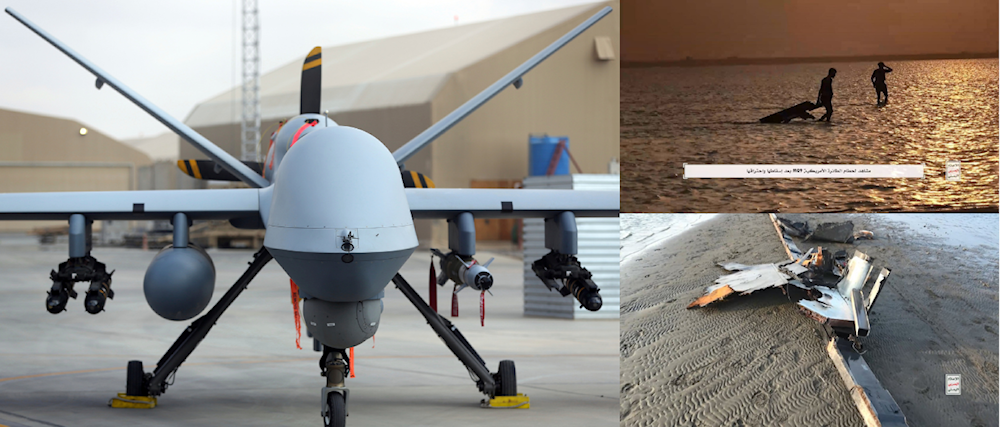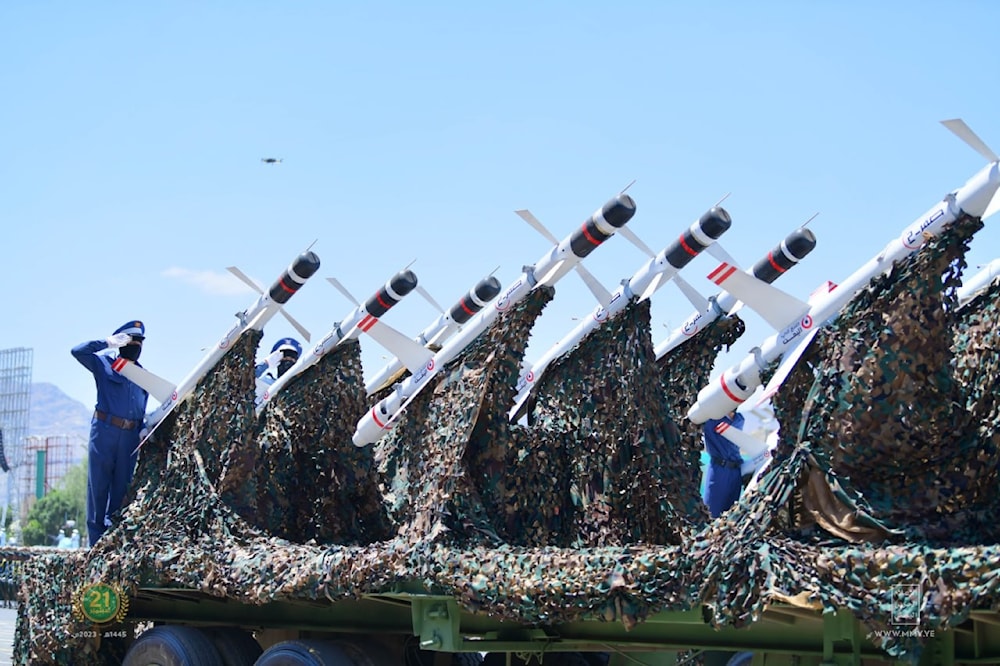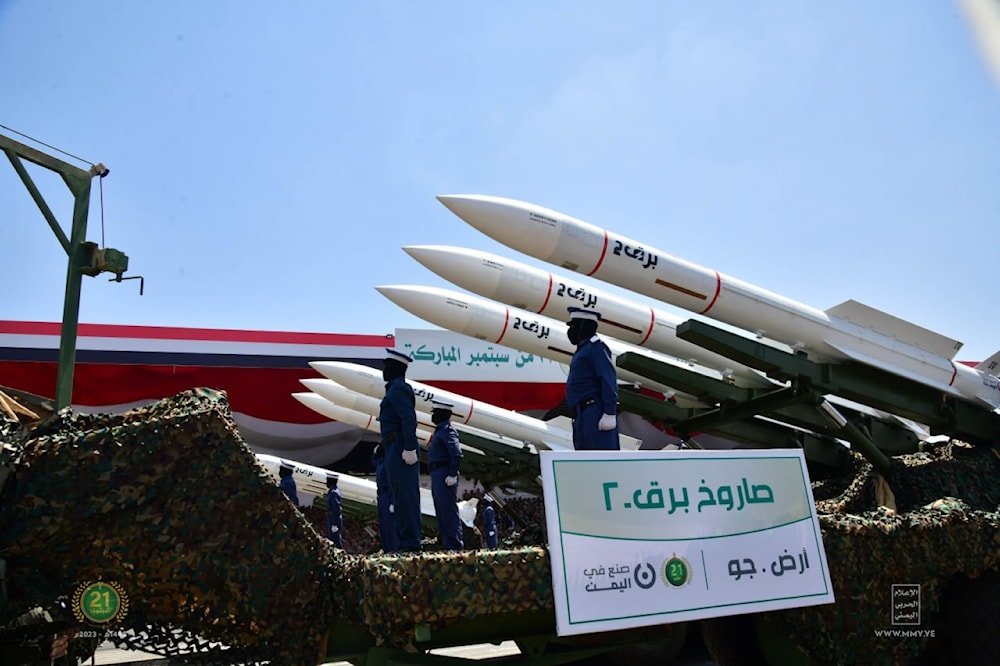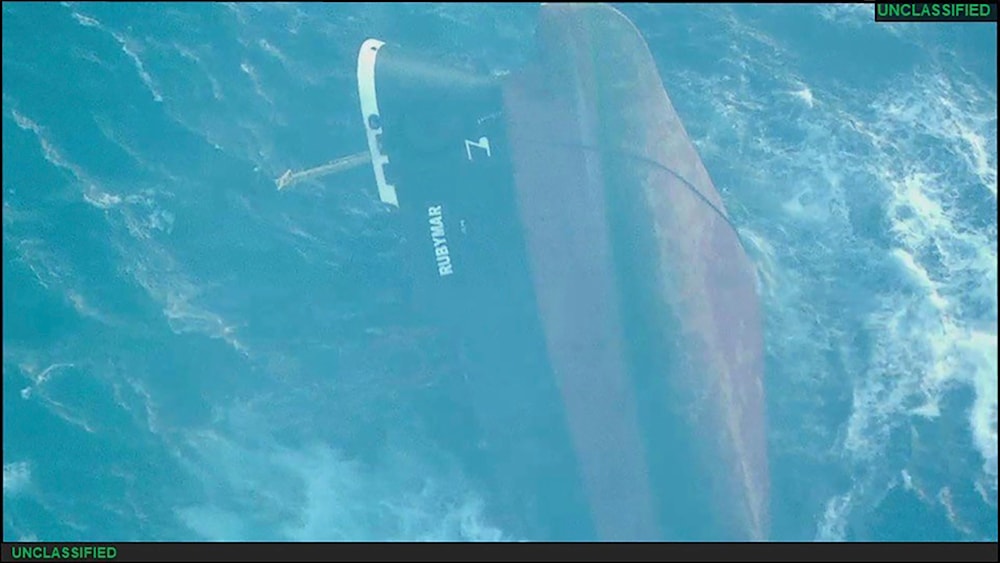Red Sea rising: Exposing the West's diminishing naval power
Western naval forces' repeated exposés in the Red Sea highlight NATO's weak seaborne air defenses and the rising power of the Axis of Resistance in contested waters.
-

A series of blunders, in the West's attempts to deter Yemen, have uncovered underlying issues in Western naval power. (Al Mayadeen English; Illustrated by: Hady Dbouk)
Table of Contents
- West Asia casts a shadow over NATO military industrial complexes
- Price list for NATO's Israeli maritime protection campaign
- Germany's Navy ridicules itself
- No SM-2 batches produced since 2018
- Large-scale confrontation might see selective engagement
- Another blunder: Denmark's unreported defensive failure gets chief sacked
- Germany's "Embarrassment" vs Yemen's Victory
- Yemen's support to Palestine uncovers deep crises in NATO's Naval power
The Red Sea has witnessed several developments that brought to light the West’s fading power, as its enemies simultaneously and continuously develop precision weapons and naval capabilities.
Although ongoing escort, air defense, and aerial attack operations in the Red Sea are viewed as uncostly, in terms of human capital, and training routines that will raise the preparedness of NATO forces in the region, they have also unveiled a quite unpleasant reality for Western navies. On the flip side, the aerial attacks of Yemeni Armed Forces (YAF) on Israeli-affiliated ships, which were later expanded to include US-UK-affiliated ships in the Red Sea, add to an extended bill that NATO countries pay for securing the Israeli genocide of the Palestinian people.
The weapons used in these operations are similar to Iranian-designed drones, ballistic missiles, and cruise missiles and have been described as "cheap" yet effective weapons by US CENTCOM commanders. These precise guided munitions have been disseminated across factions in the Axis of Resistance, via direct armament or technology sharing. When put to the correct use the weapons have proven challenging for some of the world's most well-trained and equipped forces.
West Asia casts a shadow over NATO military industrial complexes
Some weapons could have been transferred with the blueprints for the production of their main compartments and assembly at their final destination, bringing costs down and production levels up, further deepening the hole for Western counterparts. In the case of Ansar Allah in Yemen, the YAF owns and announces to locally produce a wide array of anti-ship weapons, as well as missiles, and drones that have been appropriated for attacking seaborne targets; currently being put to use to tighten a naval blockade on "Israel" through the Red Sea.
-

A number of Yemeni-produced weapons are paraded in the capital Sanaa, on September 21, 2023. (Yemeni Armed Forces/Military Media)
On the other hand, flailing Western military hegemony over the seas pushed the US and its allies to embark on a poorly planned campaign to protect Israeli shipping routes, forcing them to deal with these relatively low-cost weapons in the Red Sea and the Arabian Sea, where the YAF has dealt direct hits to multiple non-military vessels and threatened near hits some of the most advanced American military ships. This has been the case in Iraq, Syria, and Jordan, where US military bases have suffered from the horrors of cheap low-flying, and ballistic weapons in more than 100 operations on US assets, which dealt precise hits to their targets on multiple occasions.
When countering these attacks, Western forces have utilized some of the most sophisticated anti-air surface-to-air missiles, which are estimated to cost millions of dollars of taxpayer money. In the Red Sea, the US-led Western alliance has relied on NATO-standard interceptors, each of which was developed to counter specific inbound aerial objects.
According to The Responsible Statecraft and news circulating on Western media outlets regarding the mishaps of air defense units, the Western coalition has depended on the use of a layered anti-air model, consisting of RIM-116 (RAM), RIM-66 (SM-2), RIM-174 (SM-6), RIM-162 (ESSM), and RIM-161 (SM-3) interceptors. Each interceptor has been developed to counter specific weaponry, however, they all share in common extremely pricey tags.
Price list for NATO's Israeli maritime protection campaign
Below is a list of the cost of a single interceptor, excluding operational and battery costs, as of 2022:
- RIM-116 (RAM): $905,000
- RIM-66 (SM-2): $2,100,000
- RIM-174 (SM-6): $3,901,818
- RIM-162 (ESSM): $2,031,875
- RIM 161 (SM-3) Block IB: $9,698,617
- RIM-161 (SM-3) Block IIA: $27,915,625
The price list is retrieved from the US Department of Defense and military-industrial complexes' official documents.
Germany's Navy ridicules itself
Keeping the aforementioned price ranges in mind, an outrageous fluke that came as a result of a failed surface-to-air missile interception attempt by the German Navy's Hessen frigate exposed the deep-lying issues for the US-led Naval alliance in the Red Sea.
What should have been a strike on a low-cost Yemeni drone turned into a shabby affair in which the German Navy misidentified the drone, launched a dual attack on an allied asset, failed to hit the aircraft, and suffered malfunctions that led to the destruction of two interceptors midflight.
At first glance, the attack underlines several glaring issues including, the under-preparedness of the German air defense crew, inadequate storage or production of interceptors, and poor communication between NATO allied forces at Sea. Some military-concerned outlets have attempted to shift the blame on outdated German comms, however, further investigation of the incident reveals an issue of economic cost that could tip the scale towards NATO's enemies.
Germany's embarrassing mishap would cost the country around $4.2 million, as the Hessen launched two SM-2s at a US MQ-9 reaper drone that it failed to identify.
Read more: Big round of applause to Germany: fires at US drone twice, fails twice
No SM-2 batches produced since 2018
The cost of the failed operation should not be the only consideration here, as the last time Raethon sold a batch of its SM-2 Block IIIA interceptors was in a deal it signed with Denmark back in 2018. The deal was worth $152 million for 46 SM-2 Block IIIA interceptors and corresponding equipment for a couple of vertical launch systems. Now, the company has stopped producing the system, and the interceptors for lack of international orders and plans to resume production in 2035.
-

Taiwan's navy launched an SM-2 missile from a Kidd class destroyer during the Hai-Biao (Sea Dart) annual exercises, on September 26, 2013. (AP)
However, conflict in Ukraine, the war on Gaza, and tensions in East Asia may prompt reconsideration, especially as the genocide of Palestinian people drags on while their allies in Yemen, Lebanon, and Iraq tie their operations to the status of the aggression on Gaza itself.
Large-scale confrontation might see selective engagement
The fact that Raethon has not received any major orders since 2018 brings up the possibility of Western shortages in air defense systems and interceptors, in case of larger-scale engagement erupting in the region. The phenomenon cannot be limited to SM-2 interceptors but could affect a range of staple NATO-developed and produced SAMs, including the infamous Patriot systems, THAAD, Israeil Iron Dome, and other anti-ballistic and cruise missile systems.
Large-scale engagement will most likely see the Colletive West prioritize assets and selectively down often low-cost but deadly targets.
One Yemeni strike was capable of sinking a bulk carrier in the Red Sea, while an attack on a secret US outpost on the Jordanian-Syrian border injured and killed more than a hundred US servicepeople.
In a war of attrition, the Axis of Resistance's factions will have the economic advantage of pumping out low-cost munition that targets multi-million systems and vehicles, the morale advantage of deep-rooted ideological motives related to religion and nativity to the lands they defend.
Another blunder: Denmark's unreported defensive failure gets chief sacked
More recently, Denmark sacked its defense chief Flemming Lentfer after major faults were discovered in air defense systems on a frigate that it sent to the Red Sea earlier. Lentfer was axed on Wednesday night after failing to report to the Danish Defense Minister, Troels Lund Poulsen, that the Iver Huitfeldt vessel had experienced a 30 minutes-long malfunction in one of its missile and radar systems, during a drone attack in the Red Sea. The malfunction led Danish authorities to recall the frigate from its mission, marking the gravity of the faults.
"I have lost trust in the chief of defense," said Poulsen. Shockingly, he found out about the incident from a specialist military outlet, rather than any of his subordinates.
"We are facing a historic and necessary strengthening of Denmark’s defense forces. This places great demands on our organization and on the military advice at a political level," he asserted.
Danish news website Olfi was the one to break the news to the Minister of Defense, explaining that the frigate was commanded by Commander Sune Lund, who complained about a problem with the ship's active radar and C-Flex combat management system.
Unexplained outrages to the systems were severe enough to prevent the frigate from launching its ESSM interceptors. The Danish frigate's 76 mm guns were also reported to be defective on several occasions during deployment to the Red Sea. Other reports revealed other aspects of the commander's message, in which he stated that the equipment problems reportedly had been known about for "years", but that little had been done to address them.
Read more: How Yemen's Red Sea operations axed Danish defense chief
Germany's "Embarrassment" vs Yemen's Victory
Back to Germany's flop in the Red Sea, which was described by German media outlet BILD as an "Embarrassment to our (the German) Navy in the Red Sea", the YAF had just marked another milestone by downing a US-operated MQ-9 Reaper Drone over Hodeidah a few days prior to the blunder.
-

A side-by-side of a US MQ-9 Reaper drone displayed at an air show at Kandahar Airfield, Afghanistan and debris of an MQ-9 drone collected by Yemeni Armed Forces off the coast of Hodeidah, Yemen. (AP and Yemeni Armed Forces/Military Media)
Although both forces attempted to target different MQ-9-type drones using their own SAMs, the Yemeni Armed Forces were able to destroy the highly prized American drone with a "locally produced" air defense system while the Germans harrowingly failed. The Germans said that they mistakenly targeted a drone on February 28, 2024. However, their failure to down the then-unidentified object was due to unnamed technical malfunctions that led to the detonation of the two SM-2 missiles midflight, rather than active efforts to avert the disaster.
Interestingly, Sanaa had only unveiled two air defense systems capable of achieving such a hit. One of which is seemingly a copy of the Iranian-developed compact air-defense missile, dubbed Saqer-2. The missile can be easily transported and launched to take down close-range targets, flying at relatively slow speeds. The Saqer-2, a copycat of the Iranian so-called 358 surface-to-air missile reportedly functions like a one-way attack drone, reaching the required via a liquid fuel-propelled engine, to later hover near an aerial target, approaching it and detonating its warhead after being manually locked on to it by a ground operator, or by working in an autonomous mode.
-

Yemeni Armed Forces parade the Saqer-2 air-defense weapon, in the capital Sanaa, on September 21, 2023. (Yemeni Armed Forces/Military Media)
However, footage published by the YAF's Military Media indicated that the air defense system utilized in the incident was similar to traditional supersonic SAMs due to the speed at which it reached its target and the sound produced during its flight in the video.
#WATCH | Yemeni Armed Forces publish footage of the #Yemeni air defenses shooting down a US MQ9 drone in the skies of #Hodeidah Province with a locally-made surface-to-air missile while it was launching an attack on the region.#Yemen pic.twitter.com/CHQSZUZUp6
— Al Mayadeen English (@MayadeenEnglish) February 19, 2024
Notably, the missile impacted the drone in a near direct trajectory and did not pause to hover nearby or for directions by operators. Examining the publicly revealed arsenal of the YAF, this likely indicates that the missile in use was the Bareq-1 or Bareq-2 SAM.
The missiles resemble the Iranian Taer line of missiles, which are used on a multitude of staple air defense systems. Digging deeper into the origin of the technology, it is clear that the Taer or Bareq lines of missiles are actually reverse-engineered models of the Soviet-era 3M9, incorporating certain elements from NATO Standard Missiles.
-

Yemeni Armed Forces parade the Yemeni Bareq-2 surface-to-air missile, in the capital Sanaa, on September 21, 2023. (Yemeni Armed Forces/Military Media)
Presuming that the Bareq-2 was used by the YAF for the operation reveals an even deeper hole dug by Western military complexes for their own armies. Moreover, NATO's SMs are much more developed than the YAF's interceptors, as they incorporate a wide range of technological and hardware additions, putting them in a class of their own.
These additions allow for 360° scope for air defense teams allowing Hessen and other vessels to fire at any surrounding target within its range at any time without having to adjust their position while boosters on the SM-6 allow for longer-range targeting.
Still, the single-stage and aimed single launch conducted by the YAF achieved a direct hit to the 20 m-long US drone obliterating it to pieces that were scavenged by fighters on al-Hodeidah's shore.
Yemen's support to Palestine uncovers deep crises in NATO's Naval power
Putting this series of unfolding events into the context of the Yemeni Armed Forces' support to Palestine, as the Western-backed Israeli regime continues its genocidal war on Gaza, is key to not only regional security but global security as a whole.
The equations drawn by the YAF have been unprecedented in the history of the nation's struggle against Western imperialism, as for the first time, an Arab nation has taken the responsibility of launching an expansive naval campaign to support a moral and national cause, whose result will alter the course of human history. By setting this historical precedent, Yemen has not only altered regional security to the favor of natives, but it has also exposed essential faults in NATO's military and naval structure which can and will be taken advantage of by adversaries.
-

The US military's Central Command released a photo showing the Belize-flagged vessel Rubymar sinking in the Red Sea, released on March 3, 2024 (US military's Central Command)
These events have not been limited to uncovering the flaws of Danish and German forces, but they have laid bare essential challenges for the far more superior American and British navies.
For the US issues have concentrated around logistics and the high cost of operating multiple strike groups, in order to maintain feeble objectives. The UK on the other hand has witnessed multiple accidents and complications during the period of its operations.
The Yemeni Armed Forces' strategic engagements in the Red Sea highlight a significant shift in naval dynamics, exposing vulnerabilities in Western military prowess and logistical strategies. Despite maintaining relatively low-scale engagements, the YAF's precision attacks on military vessels have yielded valuable experience and expanded their target list, aided by direct repercussions from the US's involvement in the genocidal war on Gaza. This evolving scenario underscores the importance of the Axis of Resistance's strategic foresight and adaptive responses in navigating the complexities of Western provocations, in the context of modern naval warfare, signaling a paradigmatic challenge for maintaining Western military hegemony in the region.
Read more: Israeli media count Yemen as another threat to the occupation

 14 Min Read
14 Min Read










